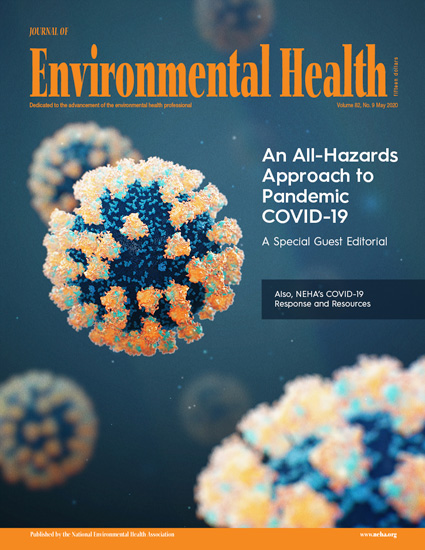When the smoke gets in your lungs: short-term effects of Indonesia’s 2015 forest fires on health care use
IF 5.3
2区 环境科学与生态学
Q1 ENVIRONMENTAL SCIENCES
引用次数: 0
Abstract
The forest fires that ravaged parts of Indonesia in 2015 were the most severely polluting of this century but little is known about their effects on health care utilization of the affected population. We estimate their short-term impact on visit rates to primary and hospital care with particular focus on visits for specific smoke-related conditions (respiratory disease, acute respiratory tract infection (ARTI) and common cold). We estimate the short-term impact of the 2015 forest fire on visit rates to primary and hospital care by combining satellite data on Aerosol Optical Depth (AOD) with administrative records from Indonesian National Health Insurance Agency (BPJS Kesehatan) from January 2015–April 2016. The 16 months of panel data cover 203 districts in the islands of Sumatra and Kalimantan before, during and after the forest fires. We use the (more efficient) ANCOVA version adaptation of a fixed effects model to compare the trends in healthcare use of affected districts (with AOD value above 0.75) with control districts (AOD value below 0.75). Considering the higher vulnerability of children’s lungs, we do this separately for children under 5 and the rest of the population adults (> 5), and for both urban and rural areas, and for both the period during and after the forest fires. We find little effects for adults. For young children we estimate positive effects for care related to respiratory problems in primary health care facilities in urban areas. Hospital care visits in general, on the other hand, are negatively affected in rural areas. We argue that these patterns arise because accessibility of care during fires is more restricted for rural than for urban areas. The severity of the fires and the absence of positive impact on health care utilization for adults and children in rural areas indicate large missed opportunities for receiving necessary care. This is particularly worrisome for children, whose lungs are most vulnerable to the effects. Our findings underscore the need to ensure ongoing access to medical services during forest fires and emphasize the necessity of catching up with essential care for children after the fires, particularly in rural areas.当烟雾进入肺部:印度尼西亚 2015 年森林大火对医疗保健使用的短期影响
2015 年肆虐印度尼西亚部分地区的森林大火是本世纪污染最严重的火灾,但人们对大火对受灾人口医疗保健利用率的影响知之甚少。我们估算了火灾对初级医疗和医院就诊率的短期影响,尤其关注与烟雾有关的特定疾病(呼吸道疾病、急性呼吸道感染 (ARTI) 和普通感冒)的就诊率。我们将 2015 年 1 月至 2016 年 4 月的气溶胶光学深度(AOD)卫星数据与印度尼西亚国家健康保险局(BPJS Kesehatan)的行政记录相结合,估算了 2015 年森林火灾对初级医疗和医院就诊率的短期影响。这 16 个月的面板数据涵盖了森林大火之前、期间和之后苏门答腊岛和加里曼丹岛的 203 个地区。我们使用(更有效的)方差分析版本的固定效应模型来比较受影响地区(AOD 值高于 0.75)与对照地区(AOD 值低于 0.75)的医疗保健使用趋势。考虑到儿童的肺部更容易受到伤害,我们分别对 5 岁以下儿童和其他成年人(大于 5 岁)、城市和农村地区以及森林火灾期间和之后进行了比较。我们发现对成年人的影响很小。对于幼儿,我们估计在城市地区的初级卫生保健机构接受与呼吸道问题有关的治疗会产生积极影响。而在农村地区,一般的医院就诊则受到负面影响。我们认为,之所以会出现这些模式,是因为在火灾期间,农村地区比城市地区更难获得医疗服务。火灾的严重程度以及对农村地区成人和儿童使用医疗保健服务没有产生积极影响,表明他们错失了大量接受必要治疗的机会。这对儿童来说尤其令人担忧,因为他们的肺部最容易受到火灾的影响。我们的研究结果突出表明,有必要确保在森林火灾期间持续提供医疗服务,并强调有必要在火灾后及时为儿童提供必要的医疗服务,尤其是在农村地区。
本文章由计算机程序翻译,如有差异,请以英文原文为准。
求助全文
约1分钟内获得全文
求助全文
来源期刊

Environmental Health
环境科学-公共卫生、环境卫生与职业卫生
CiteScore
10.10
自引率
1.70%
发文量
115
审稿时长
3.0 months
期刊介绍:
Environmental Health publishes manuscripts on all aspects of environmental and occupational medicine and related studies in toxicology and epidemiology.
Environmental Health is aimed at scientists and practitioners in all areas of environmental science where human health and well-being are involved, either directly or indirectly. Environmental Health is a public health journal serving the public health community and scientists working on matters of public health interest and importance pertaining to the environment.
 求助内容:
求助内容: 应助结果提醒方式:
应助结果提醒方式:


